The ZTE Axon 30 Ultra Review - Something Surprisingly Different
by Andrei Frumusanu on July 30, 2021 8:00 AM EST- Posted in
- Mobile
- Smartphones
- ZTE
- Axon 30 Ultra
Display Measurement
The display on the Axon 30 Ultra is a 6.67” 2400 x 1080 AMOLED that goes up to 144Hz refresh rate. ZTE doesn’t have any special claims about the display beyond that it also supports 10-bit colour depth, so we don’t expect any newer display technology such as modern emitters or more efficient backplane materials.
Design wise, the display is great and has also very good viewing angles. The 1080p resolution is stretching things a bit thin at this size and people buying the phone will have to keep this in mind – personally I don’t find it quite enough due to my habit of doing lots of reading in the evening with the phone close to my face, but many other people with more general usage at hand held distances will be plenty satisfied with the density.
In terms of colour calibration options for the display, ZTE’s myOS gives you a more simplistic settings menu: The top slider of “Colourful”, “Standard” and “Soft” change the colour gamut between something that exceeds the P3 colourspace but below that of BT2020, a P3 gamut calibration, and an sRGB gamut calibration. For our testing we’re using the “Soft”/sRGB calibration for testing.
Additionally, ZTE gives us a colour wheel and colour temperature slider, more on this in a bit.
We move on to the display calibration and fundamental display measurements of the Axon 30 Ultra screen. As always, we thank X-Rite and SpecraCal, as our measurements are performed with an X-Rite i1Pro 2 spectrophotometer, with the exception of black levels which are measured with an i1Display Pro colorimeter. Data is collected and examined using Portrait Display's CalMAN software.

In terms of brightness, while the phone is in line with other industry devices in manual brightness, coming in at 484 nits full screen white, its actual auto brightness boost levels aren’t too convincing as they only reach 606 nits, which is below that of flagship devices of the last few years. It’s still a bright display, but won’t be competitive in very bright sunlit scenarios.
In the greyscale results, the out of the box default mode of the phone is pretty bad as it veers off to very blueish tones, with 6949K whites and average colour temperatures of 6715K across the levels.
Furthermore, the gamma curve also isn’t very consistent at all in our 50% window 50% APL test patterns, with non-linear results. Both the colour inaccuracy and the gamma error result in quite bad results in terms of the dEITP figures.
Usually, we don’t publish review calibrations as vendor’s controls makes things incredibly hard to replicate – this is also the case here with ZTE: the margin for hitting that exact spot that I’ve used for accurate colour temperature is very hard to hit on the Axon 30 Ultra as the colour wheel has some large implementation bugs that result in very different results when the selector is just a few pixels apart on the outer rim of the colour wheel. Still, generally hitting that area gave me the best results on our device.
The custom setting nearly eliminates all colour errors and we get near perfect whites at 6523K. The gamma error unfortunately is still there but we can’t do much about it.
In the default settings the error rates are extremely high due to the offset white point.
In our custom white point, we’re able to get pretty good results, although we see that blues and yellow are off-hue by a larger margin and this has a larger impact on the overall error rate. This is something that can’t be corrected with the given controls.
Here’s the GMB results at the default “Neutral” white point in the Soft profile.
And our custom white point calibration, which dramatically improves the error rates, at least as far as possible.
Overall, the display of the Axon 30 Ultra is relatively mediocre by flagship standards. While viewing angles are good, it doesn’t reach the brightness of the competition. Furthermore, ZTE’s colour calibration out of the box is amongst one of the worst we’ve seen in recent years, having no way to pre-set a somewhat accurate white point. Luckily, I was able to calibrate it manually to a reasonable colour balance, but that’s not something that should be left up to customers to do.


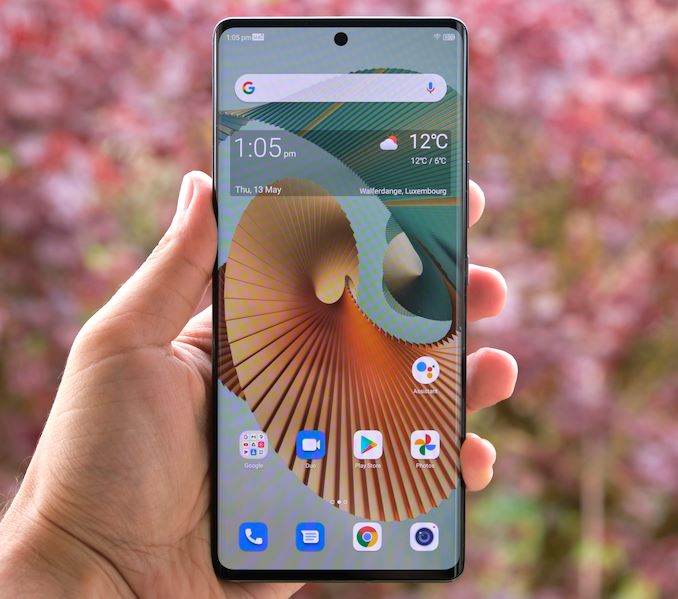
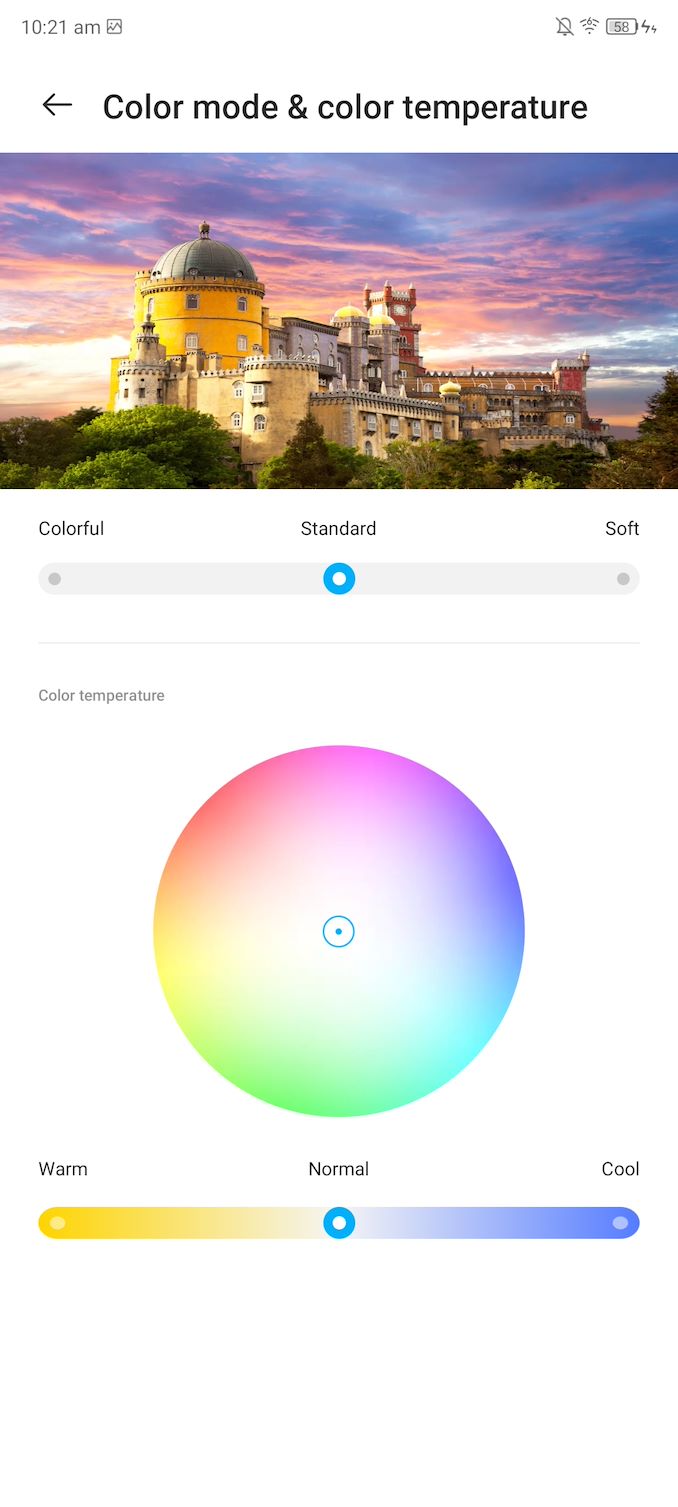
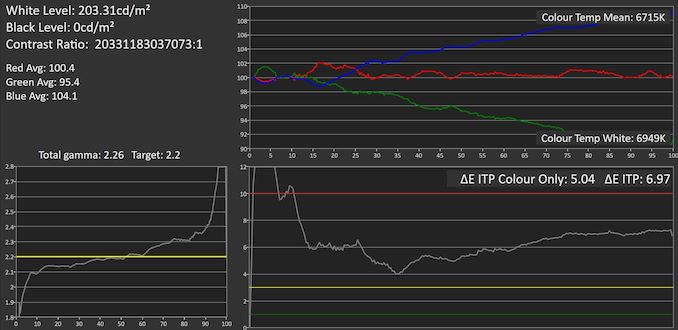


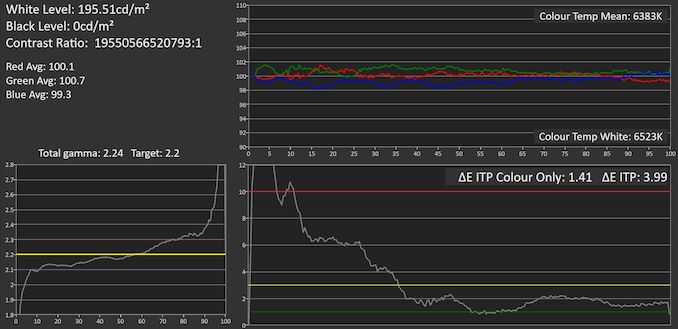

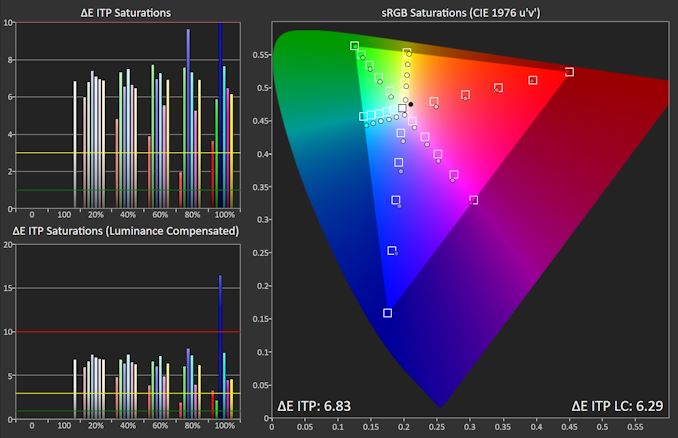
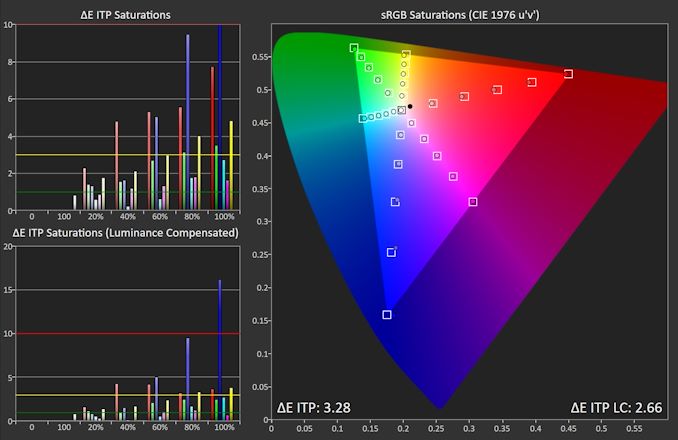
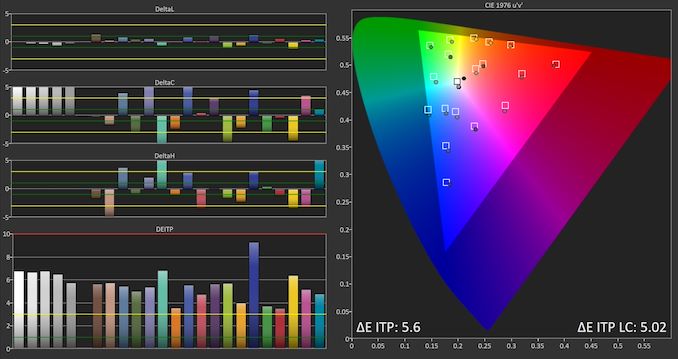

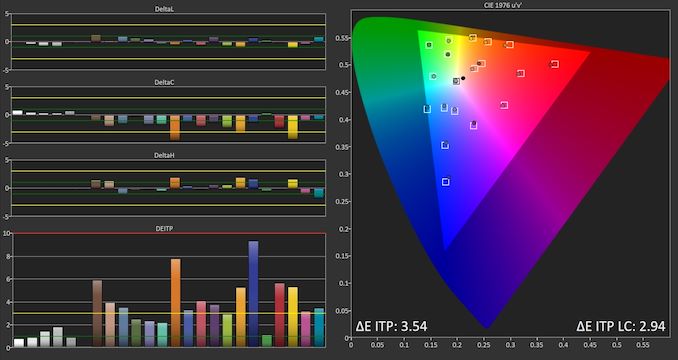









25 Comments
View All Comments
ottonis - Sunday, August 1, 2021 - link
The rules of market are fairly agnostic with regards to what customers "accept" and what they don't.As long as a company can sell good amounts of phones and even increase their margins, they will cut literally everything from the phone.
The point is: what will the consumer purchase? The mere fact that Apple Google etc are cutting away SD slots and abalogie audio ports means that a sufficient number of customers purchase these products, even at a premium price.
So, best thing to do is simply to ignore such devices and focus on comanies/brands/device models that still incorporate these components into devices.
The Sony Xperia 1/5/10 Mark III come to mind as great alternatives, although in my opinion they are quite overpriced for what they offer especially in the camera department.
The Xiaomi Pico X3 pro has a 3.5mm jack, an SD card slot, a fairly ok-ish main rear camera, is available on Amazon even in the US and costs only 280 bucks.
I am seriously considering on giving up on so called "flagships" and instead run a cheap bread and butter smartphone that does everything I need and want, and if I plan on shooting some good photos just carry around an ultra pocketable mini camera such as Canon Gx7iii or one of the Sony Rx100 models, all if which easily fit into a jeans pocket.
drajitshnew - Friday, July 30, 2021 - link
Consumers have to accept that micro SD cards are dying out. The newer micro SD express standard has been out for some time, has connectors available from at least amphenol, and has support from WD. But not even Sony Xperia supports it. There is nothing we can do about it.As for the 3.5 mm Jack, it actually provides SUPERIOR audio quality than USB -C Analog audio (the dongle type) because the Analog signal is transmitted by pins in close proximity to those carrying high frequency and high power signals. And if the signal is being output like that it is actually misleading to call it a 32 bit 192KHz audio, or something similar.
But as I said I seriously am starting to think that I made a mistake in buying a fringe model with a 3.5mm audio but botched call management.
drajitshnew - Friday, July 30, 2021 - link
The hyped audio advantages of USB-C only come into play if you output digital audio to an external high quality DAC. But that adds bulk and COST disadvantages. Also, most midrange phones have USB 2.0flyingpants265 - Friday, July 30, 2021 - link
Hard to beat the Poco X3 Pro for the price...BillyBeane - Friday, July 30, 2021 - link
Will be compatible with any US carriers after the 2g/3g shutdown? Does it do VoLTE? What Frequency bands is it compatible with?docola - Friday, July 30, 2021 - link
It's a deal killer for ANY phone that is chinese for me.Xiaomi etc has confirmed our suspicions when all kinds of data
was found to be sent to odd russian and chinese servers.
Too bad because they make great phones (xiaomi) at cheap prices.
Its selling your soul to the spy devils. No thank you.
flyingpants265 - Saturday, July 31, 2021 - link
Xiaomis are basically sold at cost. For $270 USD or whatever for the pro model, you can't really go wrong! That's cheaper than the old Nexus 4, Nexus 5, OnePlus One. Half the price of a Samsung Galaxy S3 on release.I'm flashing AOSP on mine. But of course that wouldn't change anything that might be contained inside the chips.
drajitshnew - Friday, July 30, 2021 - link
Kudos to @Andrei for b introducing browser based web benchmarks. The blacklisting and whitelisting shenanigans are seriously impairing the utility of PC mark.@dotjaz recently got a fresh perspective on the utility of software updates. Realme x7max [? Realme GT 5G] got bricked twice, before they figured that it was being caused by a software update. I was also advised and did a factory reset [unsuccessful] because my calls don't appear on the screen -- seriously.
As a reference Microsoft has done an absolutely amazing job with the technology and support in Windows 10. But it has got more brickbats for BSODs and bricking from them same updates.
flyingpants265 - Saturday, July 31, 2021 - link
What on earth? Windows 10 is one of the worst pieces of software ever made.nicolaim - Friday, July 30, 2021 - link
No good software update policy?No wireless charging?
LOL